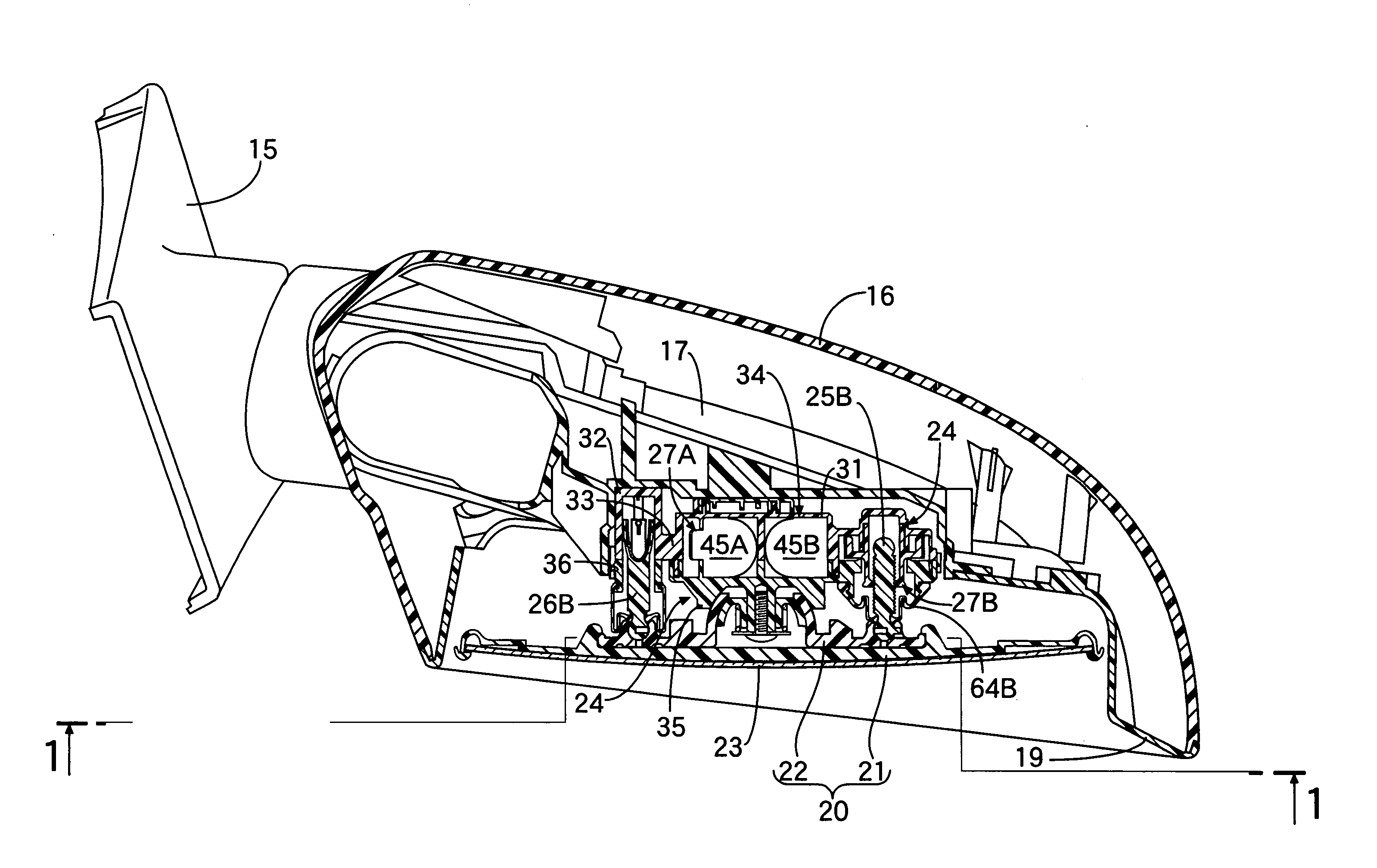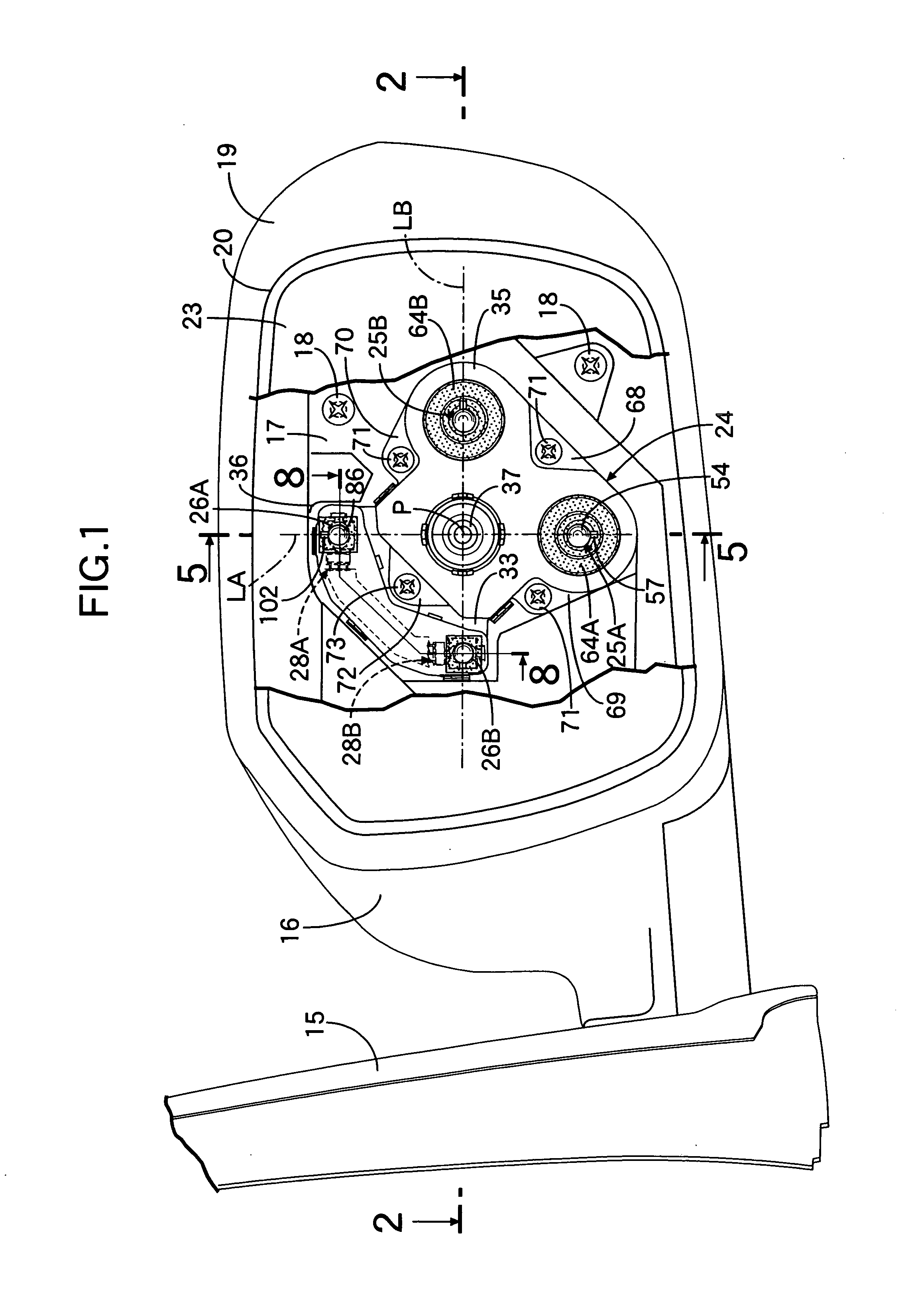[0009] With the arrangement of the first feature, the part of the operating shaft that couples the operating shaft to the mirror holder moves, in response to swing of the mirror holder, in a direction along the straight line linking the part of the drive shaft that couples the drive shaft to the mirror holder, the fulcrum of the mirror holder, and the part of the operating shaft that couples the operating shaft to the mirror holder. Therefore, the operating shaft swings around an axis that is perpendicular to a plane containing the above-mentioned straight line. However, since the detection rod has the axis coaxial with the swing axis of the operating shaft and is coupled to the operating shaft so that the operating shaft can swing around the swing axis, the position of the detection rod can be stably maintained at a position corresponding to the axial position of the operating shaft regardless of swing of the operating shaft within the guide hole. Thus, it is possible to stabilize the accuracy of the sensor in detecting the axial position of the operating shaft, thereby enhancing the accuracy of the sensor in detecting the swing angle of the mirror holder.
[0011] With the arrangement of the second feature, when the tip of the detection rod is fitted into and coupled to the other end part of the operating shaft, the operating shaft can be axially pushed against the detection rod in a state in which the detection rod is made stationary by making the tip abut against the stopper, and in this process, since the tip of the detection rod is received by the stopper, no bending stress is exerted on the detection rod from the operating shaft side. Furthermore, also when abnormal external force acts on the mirror holder and the operating shaft moves beyond a specified value, since the tip of the detection rod is received by the stopper, no bending stress is exerted on the detection rod. Therefore, both in a case in which the tip of the detection rod is fitted into and coupled to the other end part of the operating shaft, and a case in which the operating shaft moves beyond a specified value, it is possible to prevent a bending stress from acting on the detection rod, thus reliably preventing deformation of the detection rod, and thereby avoiding a degradation in the detection accuracy of the sensor.
[0013] With the arrangement of the third feature, by pushing the operating shaft against the detection rod in a state in which it is received by the stopper, the operating shaft can guide the tip of the detection rod smoothly from the guide part to the
mating part and fit it into the
mating part while elastically deforming so as to widen the width of the channel part, and the tip of the detection rod can easily be fitted into and coupled to the other end part of the operating shaft.
[0015] With the arrangement of the fourth feature, within the case main body, the first housing part housing the drive means and the first lid member covering the first housing part may have substantially the same shape as that of an
actuator case of a vehicular mirror device having a function of only driving the mirror holder by visual
remote operation. When molding the first lid member, by sharing and using a mold for molding the
actuator case of the vehicular mirror device having the function of only driving the mirror holder by visual
remote operation, the cost can be reduced. Moreover, since the first housing part housing the drive means and the second housing part housing the sensor are coupled as a unit via the
coupling part, component precision control and adjustment can be made easy, and the number of
assembly steps can be decreased.
 Login to View More
Login to View More  Login to View More
Login to View More 


